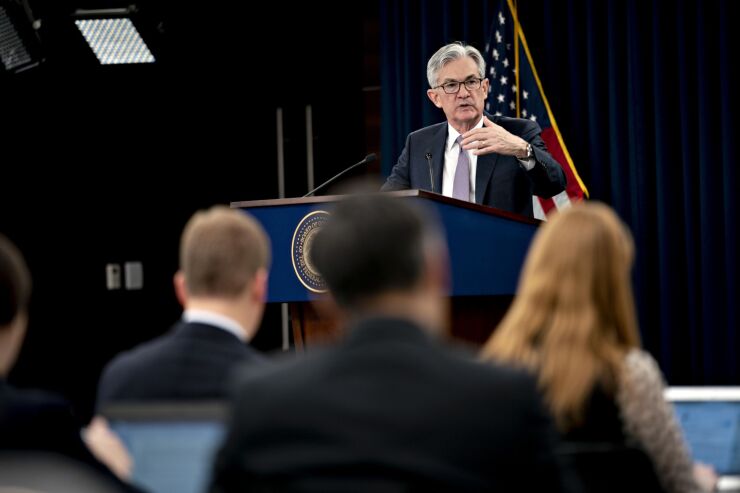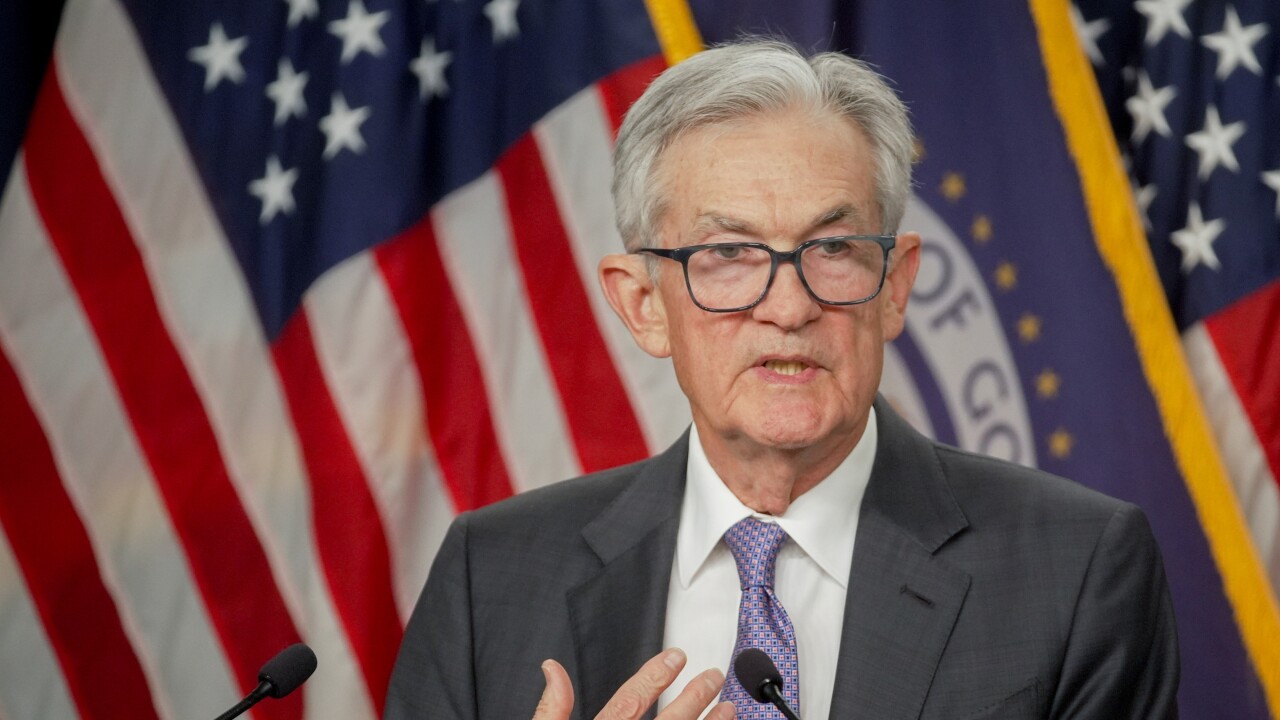
Once a
Fed Chair
"We'd be looking at what, fundamentally, what rates does the economy need," Powell said during a September press conference. "In an emergency like the pandemic or the global financial crisis, you have to cut rates to the point, you have to do what you can to support the economy."
Economists and monetary policy experts tend to agree that the Fed should be willing to implement ultra-low rates to stimulate an embattled economy. Down-the-line disruption to lending activity is merely the cost of preserving financial stability.
"In the heat of a crisis, you have to do what you have to do to survive it," said John Sedunov, a finance professor at Villanova University. "You have to worry about the after effects afterward."
Still, some of the emergency actions taken by the central bank during the past 15 years — such as quantitative easing and setting up emergency lending facilities — still face some skepticism among analysts and academics.
"Going to zero doesn't bother me. At times, it's necessary," said Lou Crandal, chief economist at the research group Wrightson ICAP. "With the benefit of hindsight, the Fed should have started tightening earlier, and I think they will be much more cautious about using asset purchases to try to depress long term real yields than they'll be concerned about taking short term rates to zero."
Karen Petrou, managing partner of Federal Financial Analytics, said the Fed's various methods have been effective in averting a complete collapse of the financial system. To that end, she said, the Fed does not need to remove any tools or put limitations on the degree of their use.
Instead, Petrou said, the Fed should focus on how and when to pull such support back once crisis moments have passed.
"The real question to ask is not whether tools like ultra-low, negative — in real terms negative — interest rates, and quantitative easing of enormous proportions are the wrong tools to use in an emergency," Petrou said. "The real question is how long do those tools remain in the financial system and how much damage do they do when, as was the case in 08 and I think in 2020, the Fed is frightened to step back and let the market start to function."
The ramifications of ultra-low rates and other interventions — first in 2008 after the subprime mortgage crisis then again in 2020 amid the COVID-19 pandemic — are being felt in the economy today after the Fed shot rates up more than 5 percentage points in a little more than a year.
Mortgage lending has stagnated as homeowners are
"Housing is on the front lines of Fed policy, so if the Fed is being very aggressive, whether it's dropping interest rates very fast or it's pushing them up very fast, you're going to see that in the mortgage market. The faster the speed, the more disruptive it is to people," said Claudia Sahm, founder of Sahm Consulting and a former Fed economist. "Given the very sensitive nature of the mortgage market to what the Fed does, that's just how this is."
The sudden and sharp change to rates has also led to funding issues in the banking sector. Close to a trillion dollars of deposits have been withdrawn as customers seek higher yields from Treasuries, money market funds and other investments. An inability to manage rising interest rates led to the failure of Silicon Valley Bank in March, kicking off the short-lived banking crisis.
Some academics say the full impact of the Fed holding rates low for such an extended period has yet to be seen. Sedunov said a pervasive zero-rate environment has fundamentally shaped consumer expectations about the cost of credit.
"After a 12-year period where you have these rates that are effectively zero, you have basically a generation of people who know nothing else," Sedunov said. "They don't know what is normal, so to speak, from before."
The Fed's trepidation about removing emergency support dates back to 2013, when an announcement about a future slowdown in asset purchases caused Treasury yields to surge. The event is commonly referred to as a taper tantrum and resulted in the Fed delaying its planned reduction of asset purchases.
The private sector again stymied the Fed's monetary policy ambitions in 2019, when a shortage of reserves caused overnight interest rates to spike. This episode resulted in the Fed ending a three-year rate hiking campaign and, ultimately, lowering interest rates once again.
Petrou said if the Fed is not willing to tolerate even brief periods of volatility, it is bound to maintain an outsized presence in financial markets, thus eroding market discipline.
"The Fed should be a little more forthright and understand that if it doesn't trust the market, it owns the market," she said. "The Fed, as the central bank, should never own the market."
Komal Sri-Kumar, a senior fellow at the Milken Institute and independent macroeconomic consultant, said taking rates to their lower bound is not problematic, in and of itself. But, he said, the Fed should be cautious about doing so swiftly or frequently. Doing so, he said, will perpetuate a boom and bust cycle that will make it difficult for monetary policy to fully normalize.
"Crises will keep repeating unless the Fed follows set rules for interest rates rather than do it on a seat-of-the-pants basis as it does currently," Sri-Kumar said. "Given the current set of policies, they are destined to cause credit events from time to time."
Shortly after the Fed began raising rates, Powell acknowledged that the Federal Open Market Committee likely kept the federal funds rate at its lower bound for too long. In testimony to Congress in March 2022, he noted that "hindsight says we should have moved earlier."
Other Fed officials have also acknowledged lessons learned from this episode. In a
"I hope that our country is not faced with another crisis as severe as the one precipitated by COVID, and that the Fed is not faced with the challenges of setting monetary policy under such conditions. But if we again face those challenges, we now have the additional insight that only experience can bring," Waller said. "I hope that this latest experience will help us approach the future with a more complete understanding of the policy choices and tradeoffs."
In the near term, the Fed is more likely to raise interest rates than it is to cut them even slightly, let alone to anywhere near the historic lows they were at a year and a half ago. In their latest summary of economic projections, or SEP, survey, FOMC members were split on whether they thought one more 25 basis point bump would be needed this year or if they could keep the target range between 5.25% and 5.5%.
Powell has frequently warned — and SEP results have reiterated — that rates may have to remain "higher for longer." Sahm noted that this would buck the decades-long trend that preceded the Fed's first cut to zero rates of rates trending lower over time.
"The economy may just be able to run stronger and have higher rates. That's been an interesting discussion, because then it's a question of [whether] are all these difficulties of the zero-lower bound, are they even relevant anymore?" Sahm said. "Time will tell, but monetary policy looks different when we're at zero than when we're at 5%."






